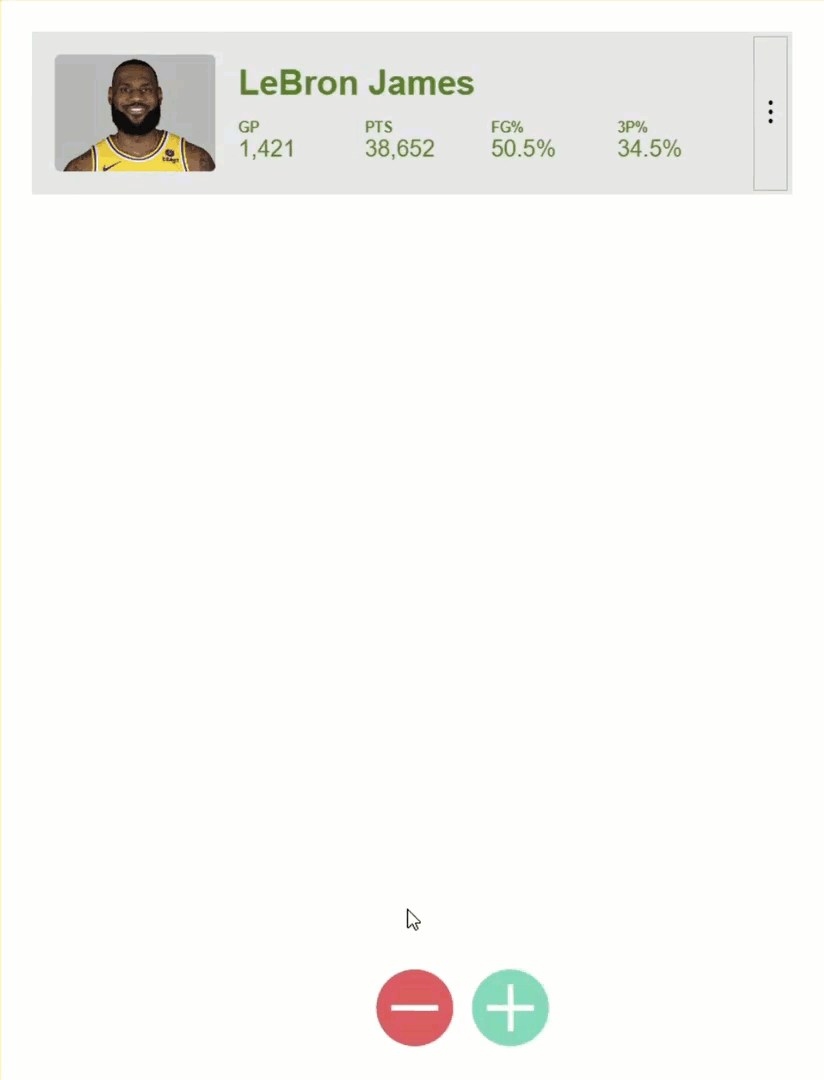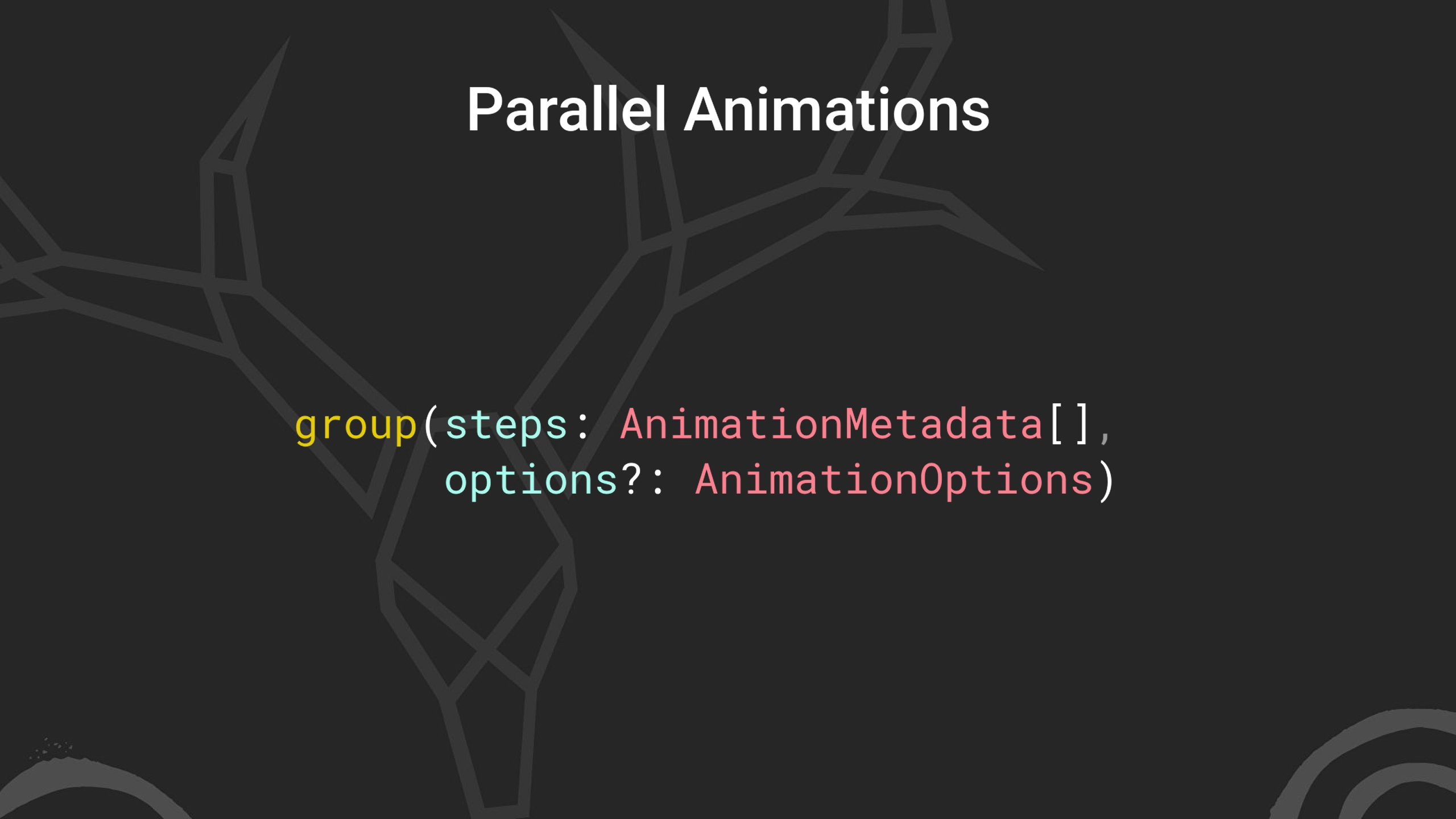Angular Animations: Animate Multiple Items in Parallel (Deprecated Module)
Angular animations run sequentially by default, which works for simple transitions but breaks complex animations where multiple properties need to change simultaneously. Parallel animations are essential for coordinated effects like simultaneous fade and slide transitions, or when animating multiple elements together. This tutorial shows you how to run multiple animations in parallel using Angular's animation API, creating more sophisticated and professional effects. Note: This uses Angular's deprecated animations module.
Before We Get Started
Now, before we get too far along, it’s important to note that I’ve already created several posts focused on the animation framework in Angular. They cover the basics of setting up and using Angular animations, creating state-based and :enter/:leave animations, using the keyframes(), query(), and stagger() functions to create more complex animation sequences, and using the start/done animation events.
So, if any of those concepts are unfamiliar to you, you’ll probably want to check those posts out first so that you’re not lost in this one.
Angular Animation Tutorials:
- Learn the Basics
- Enter and Leave Animations
- The Keyframes Function
- Query and Stagger Function
- Start and Done Events
And, to make them easier to find, I’ve created an Angular Animations playlist on my YouTube channel to help, so check it out!
Ok, enough of that, onto the example for this post.
The Demo Application
Here, we’re back to the demo application we created in an earlier post on Angular animations where we learned how the query() and stagger() functions work. This application lists out various NBA players. It starts off showing only Lebron James, but when we click the add button, we load in several more players.

Now this doesn’t look too bad because we’ve already added some animations. But let’s imagine that the client we’ve built this for now wants to highlight these list items as they’re added and removed. They want them to highlight green when they’re added and then highlight them red as they’re being removed.

Ok, no prob, we can do this.
Adding Additional Color Change Animations on :enter
Ok, let’s get started by adding the new animations needed for the enter state. When we look at this existing enter animation, we can see that this animation happens pretty quickly. Over five hundred milliseconds.
main.ts
animate('500ms ease-in', style({opacity: 1, transform: 'scale(1)'}))
That’s going to be way too short of a duration for the color change, they want that to last for a while. So, since we’ll need a different duration, we need a whole new animation. We’ll start by adding another query(), and it will query for items that are entering the DOM.
query(':enter', [])
When items are added, we need them to start with a light green background, so we’ll add the style() method. Inside, we’ll add an object with a backgroundColor. For its value, we’ll use an rgba() color function. The red value will be zero, the green value will be two fifty five, the blue value will be zero, and let’s go with point two for the alpha value.
query(':enter', [
style({backgroundColor: 'rgba(0 ,255, 0, 0.2)'})
])
Now, we need to animate this background so let’s add the animate() method. We want this color change to take a little while so let’s add a duration of three seconds, and let’s add an ease-in timing function.
query(':enter', [
style({backgroundColor: 'rgba(0 ,255, 0, 0.2)'}),
animate('3s ease-in')
])
Then we need another style() function. This time we’ll change the backgroundColor to the original rgba value. It’s going to be black, so we’ll add zeros for all of the colors, and then we’ll set the alpha to point one. So, it’s a pretty light gray color in its default state.
query(':enter', [
style({backgroundColor: 'rgba(0 ,255, 0, 0.2)'}),
animate('3s ease-in', style({backgroundColor: 'rgba(0, 0, 0, 0.1)'}))
])
Now we also want to change the text color so let’s add another query(). Here, the player’s name is inside of an h2, and the player’s stats are inside of a dl. So, this time we’ll query for an h2 within the entering item, and a dl too.
query(':enter h2, :enter dl', [])
For these, we’re going to start with a green color so let’s add another style() method. And we’ll make the color green.
query(':enter h2, :enter dl', [
style({color: 'green'})
])
Now we need to animate this to the original value so let’s add the animate() function. We’ll go with the same animation duration and easing function of three seconds and ease-in. Then we’ll add the style() function and animate the color to a value of inherit.
query(':enter h2, :enter dl', [
style({color: 'green'}),
animate('3s ease-in', style({color: 'inherit'}))
])
Now, the last piece, we need to make both of these queries optional.
query(':enter', [
...
], { optional: true }),
query(':enter h2, :enter dl', [
...
], { optional: true })
And, you can see why in the post on query() and stagger() animations if you’re curious.
Ok, let’s save and see where we’re at. Let’s hit the add button to animate the players in.

Ugh, that’s super weird right? Probably not at all how you we’re expecting and certainly not what we want.
How Animations Run by Default
Well, what’s happening here is that we have an array of animation steps. Angular simply processes and executes each animation step in sequence. So the first :enter animation runs and it takes a half second. Then, as soon as it completes, the second animation runs which changes the background color over three seconds. Finally, after that animation completes, three and a half seconds in, the text color animation starts.

So essentially, each animation is blocked by the previous animation step. In this case, this is no good. We need them to all animate at the same time, and this is where the Angular animations group() method comes into play.
Using the group() Function to Run Animations in Parallel
To set up animation steps to run at the same time, it’s actually pretty easy. We can use the animation group() function.
This function expects an array of steps consisting of AnimationMetadata objects which is what we’re used to with many of the other animation functions. AnimationOptions can optionally be passed where needed but we won’t need these in this demo.

Ok, so how do we use it within our example? Easy, we just need to wrap these three animation steps within the group() function.
group([
query(':enter', [
style({opacity: 0, transform: 'scale(0.7)'}),
stagger(100, [
animate('500ms ease-in', style({opacity: 1, transform: 'scale(1)'}))
])
], { optional: true }),
query(':enter', [
style({backgroundColor: 'rgba(0 ,255, 0, 0.2)'}),
animate('3s ease-in', style({backgroundColor: 'rgba(0, 0, 0, 0.1)'}))
], { optional: true }),
query(':enter h2, :enter dl', [
style({color: 'green'}),
animate('3s ease-in', style({color: 'inherit'}))
], { optional: true }),
])
Ok, now let’s save and try this again.

There, that looks great. They are all animating together at the same time now. Pretty cool right?
Now, that we know all of this, let’s add the red animation as the items leave the DOM.
Adding Additional Color Change Animations on :leave
Let’s add another query() here. We’ll query for leaving items this time. We’ll start from the initial gray background and animate to red so we don’t need a starting style. We just need to add the animate() function. We’ll want the transition to happen pretty quickly so let’s go with a duration of two hundred fifty milliseconds and we’ll use ease-in. Then, we’ll add the style() function, and animate the backgroundColor to an rgba() value of two fifty five for red, zero for green, zero for blue, and point two for our alpha value.
group([
...
)],
group([
...
query(':leave', [
animate('250ms ease-in', style({backgroundColor: 'rgba(255, 0, 0, 0.2)'}))
], { optional: true })
)]
Next, we’re going to change the text color so we’ll add another query(). We want to query for the h2 and dl within the leaving items this time. This animation is similar to the one, the text is going to start from its initial color so no starting style is needed. We just need to add another animate() function with the same two hundred fifty millisecond duration and ease-in timing function. Then, we need to add another style(), this time with a color of red.
group([
...
)],
group([
...
query(':leave', [
animate('250ms ease-in', style({backgroundColor: 'rgba(255, 0, 0, 0.2)'}))
], { optional: true }),
query(':leave h2, :leave dl', [
animate('250ms ease-in', style({color: 'red'}))
], { optional: true })
)]
Ok, let’s save and try it now.

Ok, everything still looks good when we add, and now they are properly turning red when they leave too. So, it’s pretty cool to see how we can override the default sequential behavior for animations.
Conclusion
So, this is yet another handy feature when it comes to animations in angular. Hopefully it helps you out somewhere along the way where you need multiple animations to run in parallel.
Now remember, there’s a lot to the animation framework, so I’ll go ahead and stop here for now, but I will be creating more posts on Angular animations in the future so stay tuned!
Want to See It in Action?
Check out the demo code and examples of these techniques in the Stackblitz example below. If you have any questions or thoughts, don’t hesitate to leave a comment.


